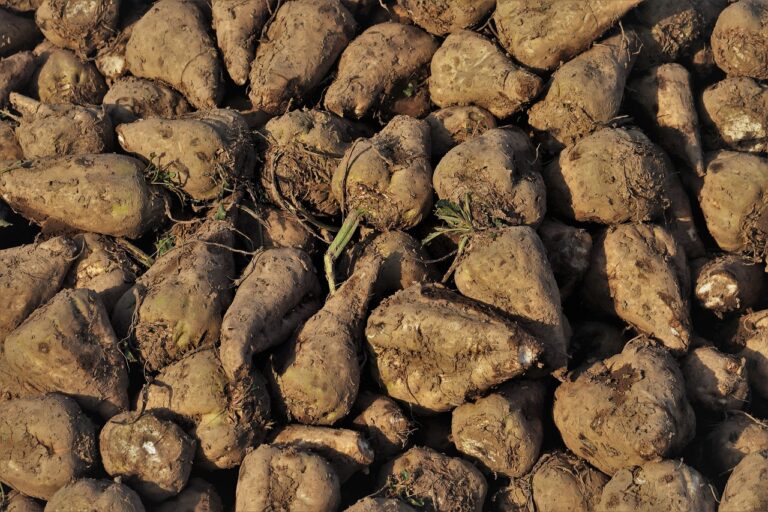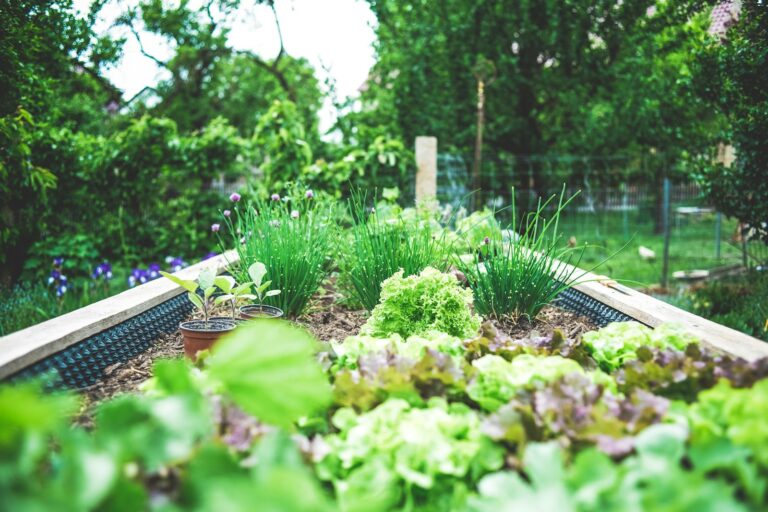Growing Cotton in Kenya: From Seed to Fabric
Cotton is a soft, fluffy fiber that grows around the seeds of the cotton plant. It is one of the oldest known fibers used for textiles and has been cultivated for over 7,000 years. Today, 25 million tons of cotton are produced annually across 85 countries.
Cotton can be grown in different regions and climates, making it a versatile crop with various uses. It is used to make clothing, bedding, and many other household items.
Importance of cotton in Kenya’s economy
Cotton farming plays a significant role in the Kenyan economy by providing income to thousands of small-scale farmers who depend on it for their livelihoods. In addition to being one of the country’s main exports, it provides employment opportunities along the value chain from planting to processing and marketing.
According to research conducted by the International Trade Center (ITC), Kenya produces about 30% of Africa’s total cotton production and ranks fourth behind Mali, Burkina Faso and Benin respectively. The Kenyan government has recognized this importance and has put measures in place such as subsidies to encourage farmers to grow more cotton while advocating against imports from neighboring countries whose quality was not up-to-par with international standards.
Kenya’s textile industry relies heavily on locally-produced cotton as a raw material for fabric production which boosts local entrepreneurship as well as creating job opportunities through backward integration which includes spinning mills that process raw materials into yarns thus creating job opportunities along various stages including ginning factories where seeds are separated from fibres. Although there may be challenges associated with growing cotton such as pest control or unfavorable weather conditions; its impact on Kenya’s economy cannot be overlooked both socially (providing jobs and lifting people out of poverty) & economically (generating foreign exchange).
Climate and Soil Conditions for Growing Cotton in Kenya
Ideal temperature and rainfall for cotton growth
Cotton is a warm-weather crop that thrives in moderate temperatures with plenty of sunshine. The ideal temperature range for growing cotton in Kenya is between 20°C-28°C.
The crop also requires moderate to high rainfall, preferably between 600mm-1000mm per annum. Cotton plants require adequate water supply especially during the period of boll formation since it affects the quality and yield of the cotton fibers produced.
Types of soil suitable for cotton cultivation
Cotton grows well in soils that are deep, well-drained, fertile, and have a pH range of 6.5 to 7.5. Sandy-loam soils are considered the most suitable type for cotton farming since they have good drainage capability which is vital in preventing waterlogging which can affect root growth leading to poor yields.
In addition, soils rich in organic matter such as humus promote good soil structure thus allowing better roots development which helps to retain more nutrients and moisture essential for growth and development of the plant. Kenya has several regions that exhibit favorable agro-climatic conditions for growing cotton such as Homa Bay, Kisii, Bungoma, Busia among others.
Farmers who wish to grow this crop can test their soil’s suitability by conducting a soil test before planting to determine if their farm meets the required standards. Overall, it’s crucial to consider both climatic conditions and soil type when planning to grow cotton in Kenya; failure to do so may result in poor yield or even loss due to unfavorable environmental factors.
Planting and Harvesting Cotton in Kenya
The Best Time to Plant Cotton Seeds in Kenya
Cotton is a tropical crop that thrives in warm climates. In Kenya, cotton is grown in the lowlands where the temperature ranges from 20 to 35 degrees Celsius.
The best time to plant cotton seeds in Kenya is during the rainy season, which typically begins around March and ends in May or June. During this period, there is enough moisture to support the growth of cotton plants.
Techniques for Planting and Spacing Cotton Plants
Once you have prepared the soil for planting cotton, you need to decide on the spacing between plants. The recommended spacing between rows should be about 75-90cm while spacing within a row should be 20-30cm apart. Proper spacing allows for better air circulation, access to more sunlight, and easy weed control.
To plant cotton seeds using a drill or planter with precision requires adequate ground preparation by ploughing repeatedly so that it’s well aerated for good seedbed preparation. The depth of planting should be shallow but not too shallow nor too deep as either can destroy germinating potential of seeds.
Picking and Harvesting the Cotton Bolls
Harvest time usually occurs after around five months after planting when flowering has ceased entirely with most bolls being mature and bursting open with white fluffy lint ready for picking. As fluffy fibers are delicate care must be taken during harvesting not damage picking them off by hand or using selective mechanical harvesting methods such as spindle pickers or strippers that remove only mature bolls while leaving immature ones still on-stem. Proper timing of planting including soil preparation before sowing determines productivity while proper maintenance practices reduce costs incurred by farmers; ultimately increasing profits at harvest time when fully-grown bolls are ready for picking.
Pest Control Measures for Cotton Farming in Kenya
Common Pests that Affect Cotton Crops in Kenya
Cotton farming in Kenya is often plagued by pests that threaten to destroy the crops. Some of the major pests affecting cotton crops in Kenya include bollworms, aphids, whiteflies, and thrips. These pests feed on different parts of the cotton plant and can cause significant damage if left unchecked.
Natural Pest Control Methods such as Crop Rotation and Intercropping
One effective way to control pests is through natural methods such as crop rotation and intercropping. Crop rotation involves planting a different crop after harvesting cotton to break the life cycle of pests that may have attacked the previous cotton crop. Intercropping involves planting other crops alongside cotton to create a diverse ecosystem that helps control pests naturally.
For example, some farmers in Kenya intercrop their cotton with beans or maize because these plants have natural insect repellent qualities which help keep pests at bay. This not only reduces the need for pesticides but also improves soil health since different crops have different nutrient requirements.
Use of Pesticides to Control Pests
While natural pest control methods are preferred, sometimes they may not be effective enough to fully control pest infestations. In such cases, pesticides may be used as a last resort.
In Kenya, farmers are encouraged to use Integrated Pest Management (IPM) practices which involve using pesticides only when necessary and in low doses that do not harm beneficial insects or pollinators. It is important for farmers to follow guidelines when using pesticides and ensure proper handling, storage, and disposal of pesticide containers as misuse can lead to environmental pollution and health hazards.
Overall, there are several pest control measures available for cotton farming in Kenya ranging from natural methods like crop rotation and intercropping to strategic use of pesticides. It is important for farmers to choose the most appropriate method depending on the nature and severity of the pest infestation.
Challenges Facing Cotton Farming in Kenya
Competition from Synthetic Fabrics: The Rise of Polyester and Other Alternatives
For many years, cotton was considered the king of textiles. It has been used to make clothes, home fabrics, and even medical supplies. However, in recent years, synthetic fabrics such as polyester have become more popular due to their affordability and durability.
This has led to a decline in demand for cotton products, which has affected the cotton farming industry in Kenya. Farmers are struggling to sell their cotton at competitive prices as consumers turn to cheaper synthetic alternatives.
Lack of Modern Farming Equipment: Difficulty Accessing Tools
Another challenge facing cotton farming in Kenya is the lack of modern farming equipment. Most farmers still use traditional methods when planting and harvesting their crops.
As a result, they are unable to keep up with other countries that have embraced technology-driven agriculture. For instance, farmers who use outdated tools cannot plant or harvest their crops fast enough before pests destroy them or before the weather changes.
Inadequate Government Support: Insufficient Agricultural Funding
Inadequate government support is also a major challenge facing cotton farming in Kenya. Many farmers do not receive enough financial support from the government to invest in modern equipment or train their workforce on best practices for crop management.
Additionally, policies around land ownership can be difficult for small-scale farmers who don’t have access to adequate financing options from financial institutions. The challenges facing cotton farming in Kenya are significant but not insurmountable if stakeholders work together towards finding solutions that will benefit everyone involved – from farmers all the way up through policymakers and consumers alike!
The Benefits of Cotton Farming to Kenyan Farmers
Economic Benefits: Income Generation, Job Creation, and Poverty Reduction
Cotton farming in Kenya has been identified as a key driver of economic growth, providing opportunities for income generation, job creation, and poverty reduction. This is particularly true for small-scale farmers who rely on cotton as a cash crop. According to the International Cotton Advisory Committee (ICAC), cotton farming in Kenya provides employment for over 200,000 people directly and indirectly.
Furthermore, cotton farming offers an opportunity for farmers to diversify their income sources. By growing cotton alongside other crops such as maize or beans, farmers can maximize their land use efficiency and earn more from the same plot of land.
Moreover, the government and private sector players are investing heavily in the cotton industry in Kenya. For instance, several ginneries have been established by private investors across different counties in Kenya that ensure farmers receive better prices for their produce.
Environmental Benefits: Soil Conservation, Reduced Use of Synthetic Materials & Carbon Sequestration
Cotton farming also has significant environmental benefits. Firstly, it helps to conserve soil by preventing erosion through means such as mulching which keeps soils moist and prevents soil loss during heavy rains. Additionally adding manure increases soil organic matter keeping it healthy.
Secondly growing cotton reduces dependency on synthetic materials such as polyester often used to make clothing items which release harmful microfibers into our waterways when washed . By choosing natural fibers like cotton we avoid polluting our environment with plastic microfibers .
,growing crops like cotton is considered good practice for carbon sequestration whereby plants absorb carbon dioxide from the atmosphere through photosynthesis storing it in biomass . It is also worth noting that organic practices reduce greenhouse gas emissions by reducing dependence on synthetic fertilizers thus reducing their carbon footprint.
,cotton farming in Kenya provides both economic and environmental benefits to Kenyan farmers. As the world becomes more environmentally conscious, cotton farming has the potential to become a growth engine for the country’s economy.
Conclusion
After considering all the aspects, it is evident that cotton farming in Kenya has significant potential. The climate and soil conditions are ideal for this crop, and proper pest control measures can help in reducing losses. Cotton farming can benefit the farmers economically and environmentally while contributing to Kenya’s economy.
Cotton farming in Kenya requires appropriate planting techniques such as spacing, timely harvesting procedures, suitable pest control measures, and support from government authorities. Farmers should also utilize intercropping techniques to ensure soil conservation while reducing synthetic material use.
Although there are challenges such as competition from synthetic fabrics and lack of modern equipment and adequate government support, promising prospects exist for cotton farmers in Kenya with the right mindset. Growing cotton in Kenya can be a viable option for farmers who want to earn a good income while sustainably managing their land’s productivity levels.




How many acres of land do I need to plant to harvest large volume of cotton? How much is 1kg of cotton cost?